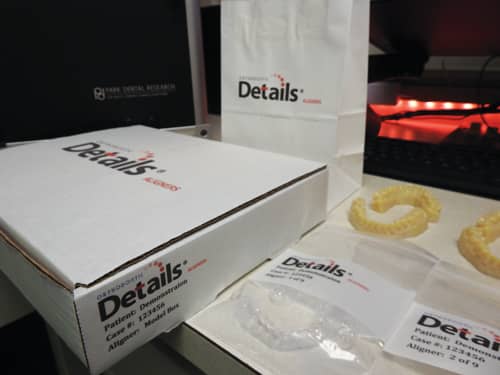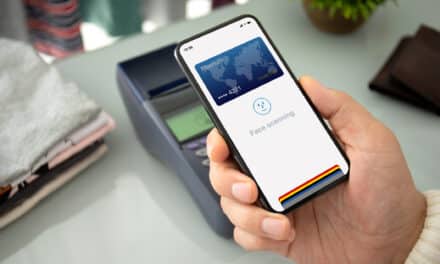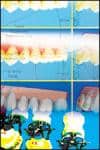Whether it’s for improvements in accuracy, efficiency, cost savings, or a heightened patient experience, developing an orthodontic digital workflow is becoming best practices for orthodontic offices. “Going digital” started 15 years ago for my practice with an idea and a napkin, and is now the backbone of our quality orthodontic treatment and is continuing to differentiate the practice.
The 15 years of product exploration, digital equipment comparisons, and the assembly of a digital workflow into my practice have paid off immensely. Combining digital imaging, intraoral scanning, software and file management, and in-office 3D printing has established the digital workflow that has made our practice competitive. But “branding” our orthodontic digital workflow is what has created the hidden benefits that have contributed to the market differentiation and resulted in the biggest payoff ever.
Yes, I branded my digital workflow.
We all spend an enormous amount of time and money creating and developing “branding” for our practice. Agreeably, this is an important step in establishing a way to identify ourselves with our patients, referring doctors, and the community. Well-designed logos, websites, brochures, and messages about our practice and services are essential tools for our internal and external marketing efforts. Incorporating this into social media and online forums is essential. Utilizing our “branding” is important to communicate the services and benefits of our practice. All of these features are important efforts to establish a “brand” for our practice. We all have “branded” our practices to some degree, and developing and implementing an orthodontic digital workflow will soon become commonplace. However, “branding” the orthodontic digital workflow itself, separate from the branding of the practice, has allowed our practice to capitalize on all of the effort that we’ve put into the evolving process.
How and Why Do You Brand a Digital Workflow?
So how, when, and where has “branding” our digital workflow helped us capitalize on all of the time and effort in developing this service to our patients? How does one create a brand for something like a digital workflow? How does branding our digital workflow allow us to expand into other areas of our practice resulting in growth and additional revenue for our practice? For me, it all started 15 years ago. As I sat for a brainstorming session with executives from an up-and-coming orthodontic company that wanted to break into the digital orthodontic arena, I started thinking about what would eventually become the brand for the digital workflow we currently offer in our practice—Orthodontic DETAILS.
Practice Brand Is Different than Digital Workflow Brand
From the minute you walk through our doors, the separate branding of our practice and our digital workflow is evident. Designed to inform our patients of the benefits of our digital workflow and function throughout our practice at all stages of the treatment process, our brand screams differentiation in the orthodontic marketplace. The brand was created by describing the simplistic benefits that our digital workflow offered. I felt it offered Digitally Enhanced Treatment And Indirect Laboratory Services. This became the acronym for the brand known as Orthodontic DETAILS. Within the orthodontic profession, the word DETAILS has had a specific meaning for a century, and now it has a specific meaning for our patients too! DETAILS was then trademarked and a logo was developed with colors representing how DETAILS helped us reinforce the importance of dotting the “i’s” and crossing the “t’s” in any well-executed plan. We can now educate and establish trust among our patients by showing them that we have a method, a process, and an experience designed to be a world-class and digitally advanced offering.

The Orthodontic DETAILS branding helps patients understand, experience, and want this level of care.
Improving Patient Understanding and Experience
We needed to ensure that our patients recognized the benefits of the time-consuming, frustrating, and expensive exercise of developing a fundamentally sound orthodontic digital workflow. We needed to use the brand to heighten the patient’s understanding of why our practice offered a high level of care secondary to our digital workflow. They needed to see it, understand it, experience it, believe in it, and, most importantly, want it. There are countless examples of how we incorporated DETAILS into our practice, and why you should do the same thing. From in-office signage, brochures, office forms, lab routing slips, and even a separate website, orthodonticdetails.com, DETAILS has become the brand that our patients have learned to trust and expect.
In-house-Made Aligners Are Now Competitive
One of the intuitive advantages enabled by our digital workflow and new equipment was the ability to create in-house aligners. This has allowed us to compete with third party products, like Invisalign, Clear Correct, and others. But many times, when patients were presented with the in-house vs the well-marketed professional branding experience of third party products, they became brand sensitive. It’s the same reason people choose brand name drugs over generics, trust and the appearance of better quality, despite the products or services being nearly identical. To even the playing field, I started branding the packaging and presentation of my in-house-made aligners as DETAILS aligners. The results were immediate. A DETAILS branded aligner treatment is frequently chosen and accepted now, reducing costs and improving our margins, when compared to third party products.
So, if you’re currently going through the process of implementing a digital workflow yourself or if you have one in place, I encourage you to not stop there. Consider branding the unique way your practice provides care. You’ll find that your patients appreciate it, want it, and tell others about it. OP













